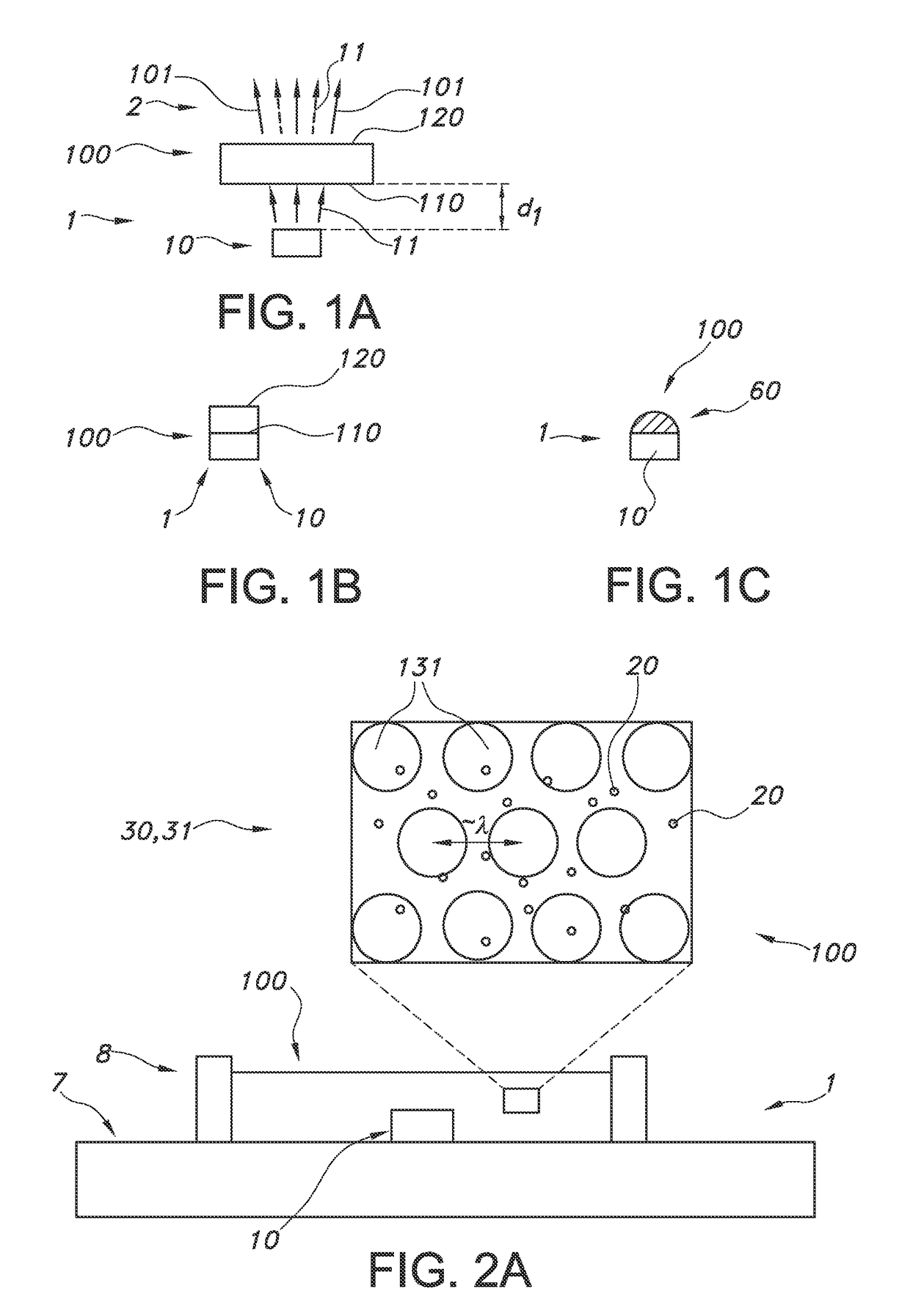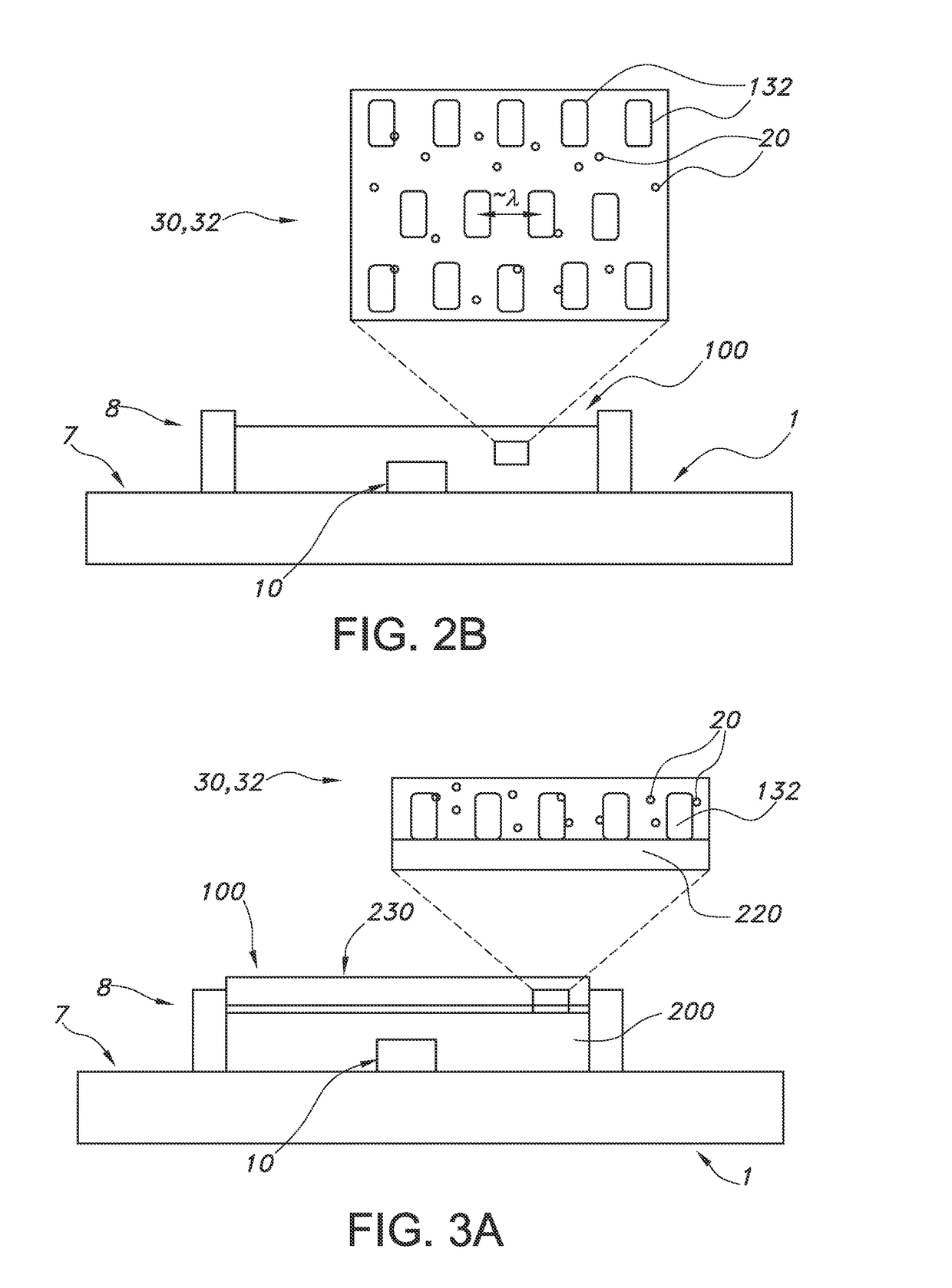Quantum dots with reduced saturation quenching
a quantum dots and saturation quenching technology, applied in semiconductor devices, lighting and heating apparatus, instruments, etc., can solve the problems of substantially white light produced by defects, and achieve the effect of reducing the radiative lifetime, enhancing the efficiency, and reducing the efficiency of light converters and/or lighting devices
- Summary
- Abstract
- Description
- Claims
- Application Information
AI Technical Summary
Benefits of technology
Problems solved by technology
Method used
Image
Examples
Embodiment Construction
[0098]FIGS. 1a-1c schematically depict some embodiments of the lighting unit. The lighting unit is indicated with reference 1; the light source with reference 10 and the light converter with reference 100. The light source may e.g. a LED with a die (not depicted) from which light source light emanates. The light source light generated by the light source 10 is indicated with reference 11. There may be a non-zero distance between the light converter 100 and the light source. The distance is indicated with reference d1, and may be in the range of 0.1 mm-10 cm. However, this distance may also be zero, as schematically depicted in FIG. 1b.
[0099]The light converter may include a light receiving face 110, which is directed to the light source 10, and a light exit face 120 (in general opposite of the light receiving face 110). From this face light converter light 101 may emanate. However, it is not excluded that this light may also escape from one or more other faces, including the light ...
PUM
| Property | Measurement | Unit |
|---|---|---|
| quantum efficiency | aaaaa | aaaaa |
| quantum efficiency | aaaaa | aaaaa |
| FWHM | aaaaa | aaaaa |
Abstract
Description
Claims
Application Information
 Login to View More
Login to View More - R&D
- Intellectual Property
- Life Sciences
- Materials
- Tech Scout
- Unparalleled Data Quality
- Higher Quality Content
- 60% Fewer Hallucinations
Browse by: Latest US Patents, China's latest patents, Technical Efficacy Thesaurus, Application Domain, Technology Topic, Popular Technical Reports.
© 2025 PatSnap. All rights reserved.Legal|Privacy policy|Modern Slavery Act Transparency Statement|Sitemap|About US| Contact US: help@patsnap.com



